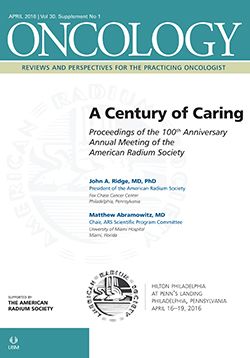(S021) Success of Prophylactic Single-Fraction Radiation Therapy in the Prevention of Pathologic Femoral Fractures
Single-fraction RT to the femur was effective in the prevention of femoral fractures. The pain score was also decreased in our patient population. Further studies are needed to explore 8 Gy/1 fx against standard radiation as a more effective means of delivering therapeutic and convenient treatment in metastatic patients.
Tijana Skrepnik, MD, Lauren Eisenberg, BS, Hitendra Patel, MD, Krisha Howell, MD; Department of Radiation Oncology, Department of Hematology/Oncology, Banner/University of Arizona Hospitals; University of Arizona
INTRODUCTION: Femoral metastases pose a threat of fracture. A low Mirel bone score (MBS) of < 8 points predicts a fracture rate of ~4% with standard fractionation radiation therapy (RT) alone. A score of > 8 points indicates a risk of fracture of 15% or higher, suggesting a role for surgical stabilization in addition to standard RT. Little data exist confirming the efficacy of single-fraction RT for fracture prevention.
METHODS: We performed a retrospective review of femoral metastases treated to 8 Gy × one fraction (fx). Relevant images and pain scores were reviewed for bony stability and assigned an MBS. Surgical consultation/intervention, prospectively acquired pain scores/toxicity assessments, and in-field fracture rates as reported on follow-up imaging were assessed.
RESULTS: In reviewing 198 charts, 24 metastatic femoral lesions from nonmyelomatous primaries were identified. Median clinical and radiographic follow-up was 1 month and 3 months, with a median overall survival status postcompletion of therapy of 4.3 months (range: 0.3–31.9 mo). The highest fracture risk region (peritrochanteric) constituted 41.7% of lesions, followed by head/neck (33.3%), femoral shaft (20.8%), and epiphyseal (4%) locations. Median MBS was 8 (range: 6–12), and two-thirds of patients did not receive a surgical consult. There were three fractures prior to RT (one nondisplaced, one previously stabilized, and one impending). Four sites received surgical intervention with a median intervention time of 14 months before RT (range: 0.4–24 mo). All (100%) irradiated bony sites had no subsequent fractures. Median pretreatment and posttreatment pain scores were 7 and 0, respectively, with a median improvement of 6 points on the pain scale.
CONCLUSION: Single-fraction RT to the femur was effective in the prevention of femoral fractures. The pain score was also decreased in our patient population. Further studies are needed to explore 8 Gy/1 fx against standard radiation as a more effective means of delivering therapeutic and convenient treatment in metastatic patients.
Proceedings of the 98th Annual Meeting of the American Radium Society - americanradiumsociety.org
